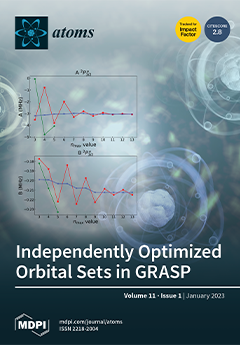Open AccessArticle
Exploitation of the Timing Capabilities of Metallic Magnetic Calorimeters for a Coincidence Measurement Scheme
by
Philip Pfäfflein, Günter Weber, Steffen Allgeier, Sonja Bernitt, Andreas Fleischmann, Marvin Friedrich, Christoph Hahn, Daniel Hengstler, Marc Oliver Herdrich, Anton Kalinin, Felix Martin Kröger, Patricia Kuntz, Michael Lestinsky, Bastian Löher, Esther Babette Menz, Uwe Spillmann, Binghui Zhu, Christian Enss and Thomas Stöhlker
Cited by 1 | Viewed by 1668
Abstract
In this report, we compare two filter algorithms for extracting timing information using novel metallic magnetic calorimeter detectors, applied to the precision X-ray spectroscopy of highly charged ions in a storage ring. Accurate timing information is crucial when exploiting coincidence conditions for background
[...] Read more.
In this report, we compare two filter algorithms for extracting timing information using novel metallic magnetic calorimeter detectors, applied to the precision X-ray spectroscopy of highly charged ions in a storage ring. Accurate timing information is crucial when exploiting coincidence conditions for background suppression to obtain clean spectra. For X-rays emitted by charge-changing interactions between ions and a target, this is a well-established technique when relying on conventional semiconductor detectors that offer a good temporal resolution. However, until recently, such a coincidence scheme had never been realized with metallic magnetic calorimeters, which typically feature much longer signal rise times. In this report, we present optimized timing filter algorithms for this type of detector. Their application to experimental data recently obtained at the electron cooler of CRYRING@ESR at GSI, Darmstadt is discussed.
Full article
►▼
Show Figures





